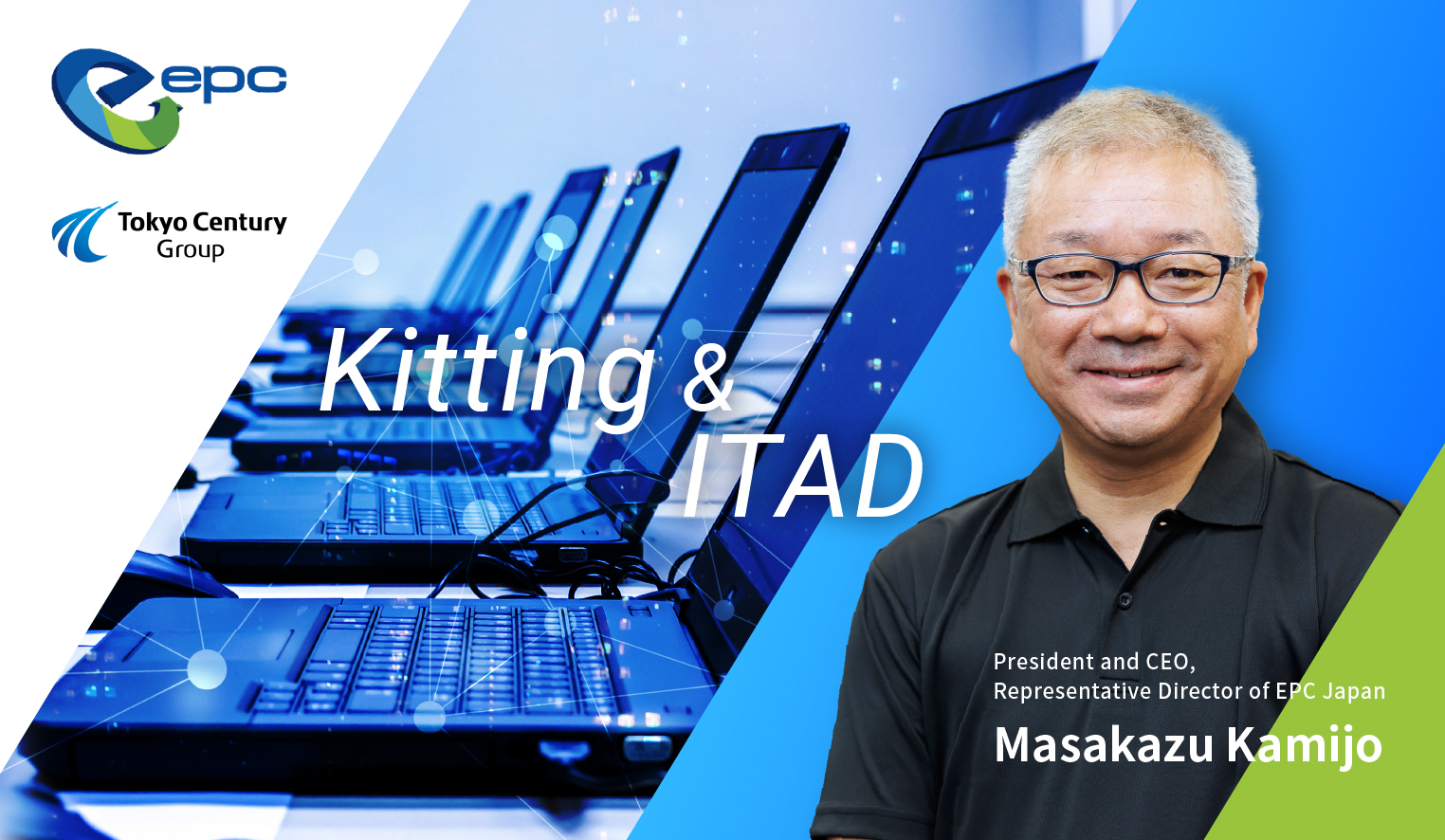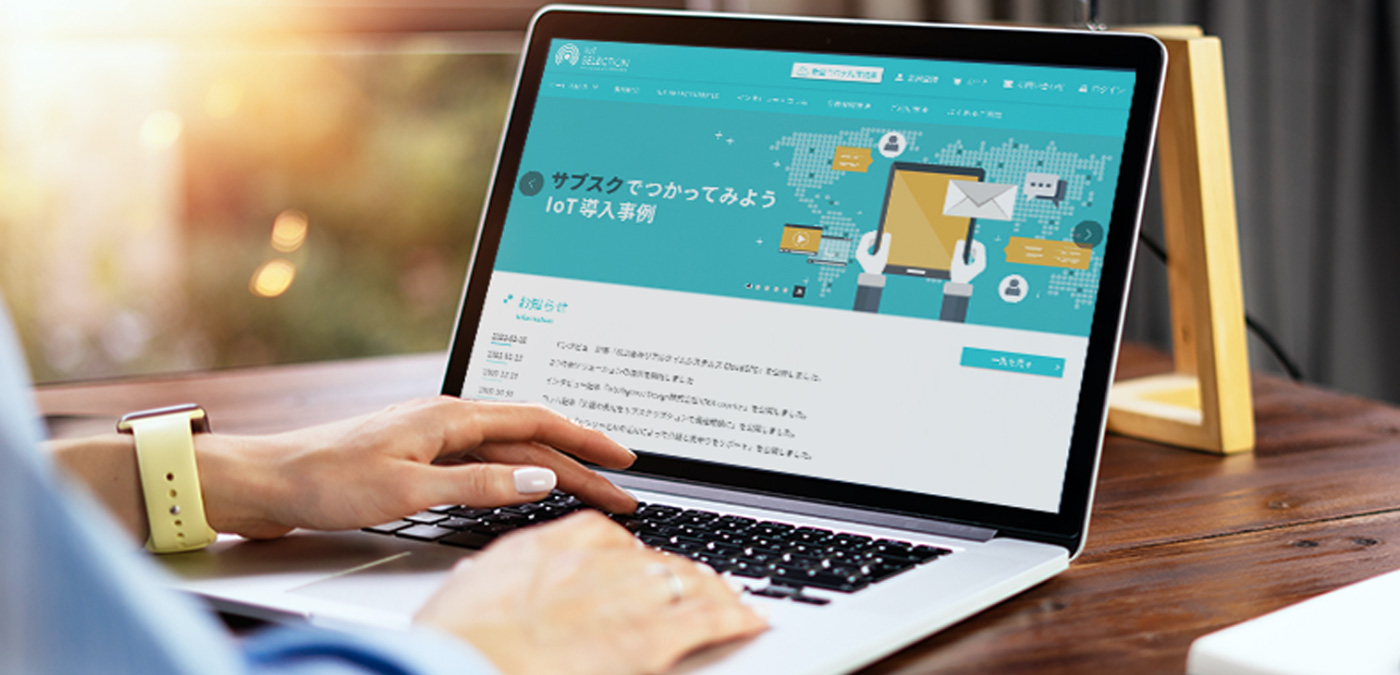
Key Leaders of the IoT SELECTION Service Share Their Thoughts on the New IoT Subscription Model
Jun 18, 2021
Many industries in Japan are facing a labor shortage caused by the rapidly declining birthrate and aging population. This has led to growing interest in IoT solutions that reduce personnel, save labor and raise operational efficiency. On the other hand, more than a few companies considering IoT solutions are having second thoughts because of challenges such as the costs and knowledge required.
To solve this problem, IoT platform provider SORACOM Inc. and Tokyo Century jointly launched IoT SELECTION, a subscription service for IoT solutions. We spoke with three key persons in charge of the service about the specific benefits for users and related topics.
IoT SELECTION provides IoT “Products” in the Form of Experience
Introduction of IoT SELECTION (Japanese)
――First of all, please tell us about the service offered by IoT SELECTION.
Futakami: IoT SELECTION provides a number of proven IoT solutions in various industries on a subscription basis-that is, a pay-per-use model in a package that includes devices, communication and application services. This enables customers to use the IoT solutions on a monthly basis by applying on our website without having to purchase any devices, sign a contract with a carrier or build out additional systems.
Fujiki: SORACOM’s communication service is incorporated in all our IoT solutions, so there is no need to construct new networks. This can significantly reduce the customer’s burden in terms of initial cost and the development period, compared to an in-house approach.
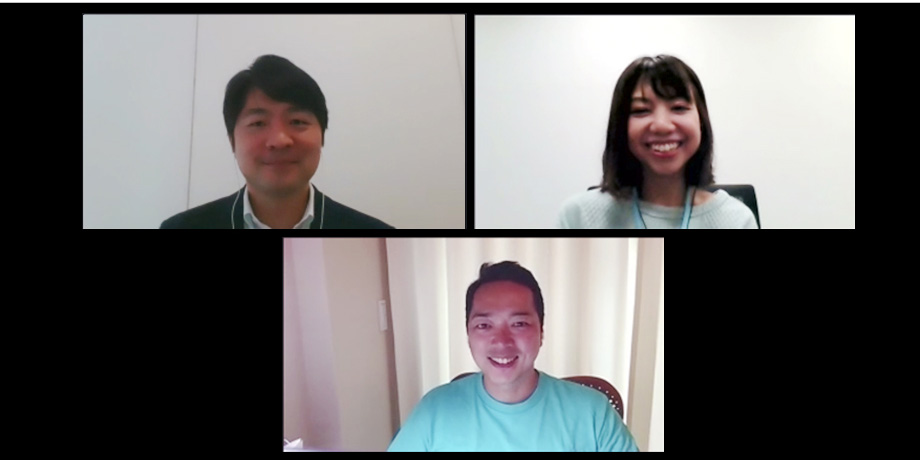
Fujiki from Tokyo Century (left),Kasaya from Tokyo Century (right),Alliance Manager Futakami from SORACOM (center)
――Please explain how the service began.
Fujiki: Tokyo Century had been eyeing the subscription model as a promising new business. In 2017, we formed a capital and business partnership with Bplats, which provides a subscription management platform, and began exploring a new subscription-based business model. In the process, we consulted Mr. Futakami about a possible collaboration with SORACOM, a company with an extensive track record in IoT.
Futakami: SORACOM boasts a rich source of superior IoT solutions with proven results, jointly developed with partner companies. Our problem was that these solutions were slow to spread, and recognition remained low. To expand our user base beyond engineers and others with specialized knowledge, we thought there was a need to offer our solutions as a packaged experience. That was when Mr. Fujiki approached us, and I felt that something clicked.
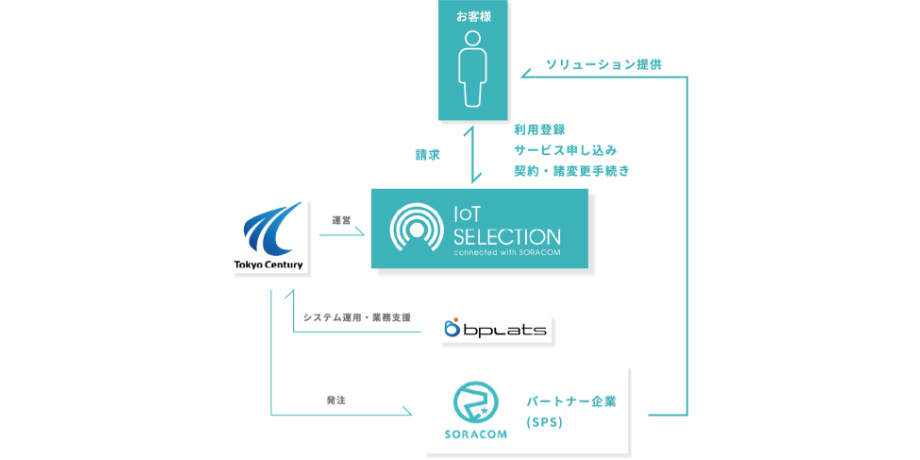
IoT SELECTION provides IoT solution service collaborating with SORACOM and Bplats in subscription basis
Fujiki: Subscription is a form of service that makes it easy to imagine the shift from products to services that we often talk about. Subscribers are not seeking the product itself, such as a device, but rather the experience or effect (service) that results from using that product. Tokyo Century’s founding business is leasing, which involves lending products to users, so we began with an ample base of knowledge, and I felt there was a strong affinity between our business and the subscription model.
We also have a distinct culture of partnerships. So, I felt there was potential for working on some type of business with SORACOM in that sense as well.
Futakami: Once we were approached, things went smoothly. The two companies reached an agreement a month and a half later, and the service was launched after six months.
Kasaya: In this project, speed was of the essence in making internal adjustments and decisions on Tokyo Century’s part in order to keep up with SORACOM’s pace of business as a startup. I think that was also part of the challenge for us.
These days, fast-moving projects like this are becoming common at Tokyo Century, and our ability to adapt is a major strength.
Service that Encourages Hesitant Customers to Adopt IoT

――What are the specific benefits of using IoT solutions on a subscription basis?
Futakami: While many businesses are interested in IoT, two issues typically stand in the way of adopting IoT.
One is the considerable burden posed by the cost of purchasing hardware. IoT adoption typically starts with a small-scale trial, an initial cost that is on top of the overall expense for full adoption. Moreover, if you decide against introducing IoT as a result of the trial, the cost of purchasing hardware is essentially wasted. This issue of initial costs has been a major impediment for companies seeking to introduce IoT.
Another issue, which is common for IoT solutions in general, is the lack of a “price tag.” In other words, you never know how much it will cost in the end until you’ve actually done it. Eliminating obstacles such as the introduction cost and ambiguity in overall cost was a major objective for adopting the subscription model.
Fujiki: These are a great advantage for users that can try them out on a small scale and for a short period. The system allows them to pay for a given period of use and discontinue at any time, and it gives them the flexibility to decide whether to cancel, continue, or install an alternative solution, based on their actual experience.
Futakami: In addition, SORACOM offers ample examples and knowledge in the form of use cases and actual outcomes at other companies. In that sense, IoT SELECTION provides proven solutions and can be expected to show results above a certain level. This will also lower the psychological barriers, making it an optimal service for those who have been hesitant to take their first step in introducing IoT.
――I see. So, this is the first IoT solution service of its kind. It must have been difficult and challenging to give form to an unprecedented service.
Kasaya: Since most companies start by gathering information on the Internet when considering IoT, we began by designing our website and presenting applications that convey a clear image of adopting IoT solutions.
Futakami: As for our current challenge, while IoT SELECTION is based on the concept of a specialty store offering selective solutions, having a wide variety of options is also important. Looking ahead, we intend to increase the number of solutions posted on the site. To that end, we will reinforce our efforts to support businesses seeking to create new services based on SORACOM.
Co-Creation Platform Where Diverse Companies Collaborate to Generate New Services
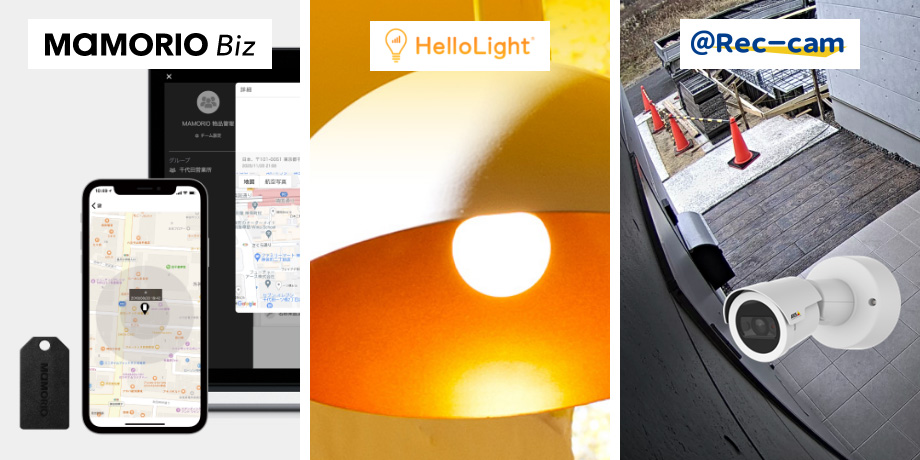
――What feedback have you received from businesses that use IoT SELECTION, and what are a few examples?
Fujiki: We have recently observed an increase in general solutions for manufacturing and factories, such as those for visualizing analog meters and detecting deterioration in motors and pumps. We frequently receive feedback from small- and medium-sized enterprises that have shown a longstanding interest in such IoT solutions.

Solution to visualize analog meters

MMCloud for AEmonitorPack: detecting deterioration in motors and pumps
Futakami: Other services expected to be deployed by manufacturers or at factories include MAMORIO Biz for preventing the loss of shared objects and managing returned or stored objects, and @Rec-cam, a remotely operated outdoor camera that is in strong demand at factories and warehouses.
Fujiki: Right now, the IoT lightbulb HelloLight is the most popular service in IoT SELECTION. This convenient solution can be used for the remote monitoring of seniors and home security by using it to replace a lightbulb in the house. For example, Yamato Transport uses HelloLight to operate a monitoring service for elderly people who live alone for their family members. Since the monthly subscription starts from a single unit, the service is being provided through small- and medium-sized companies as well as local governments.
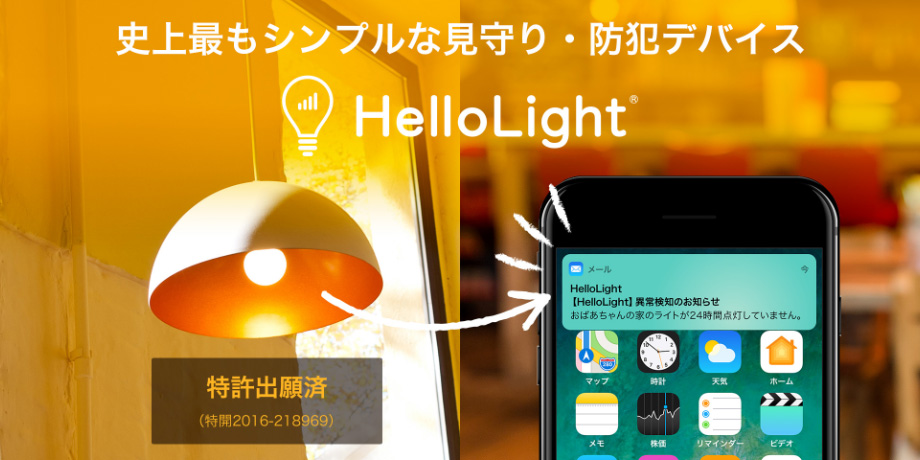
HelloLight: a watch-over service using communication function-equipped IoT LED bulb
――The COVID-19 pandemic must have raised the need for IoT solutions used in remote surveillance and monitoring.
Kasaya: One monitoring service being installed more frequently is the AI-based Live-Connect Facility. By attaching sensors to beds and rooms at nursing homes and other facilities, the service can confirm personal safety and provide data on respiratory rates as well as whether the person has gone outside or to the bathroom. By using this service, caregivers can avoid visiting rooms at night to confirm resident safety and inadvertently waking them up. The service alleviates the burden on caregivers and enables them to provide greater comfort.

Live-Connect Facility: remote monitoring of location information
――Who do you expect will use IoT SELECTION in the future and how will they start?
Kasaya: Until now, although there are barriers to introducing IoT, such as the need for specialized knowledge and introduction costs, IoT SELECTION has enabled users to readily adopt it at low cost. I think there is great potential in such fields as nursing, where bold investments have been difficult, despite the need to address the shortage of workers.
Fujiki: Right. The Japanese population is at an advanced stage of aging compared to the rest of the world. I think IoT SELECTION will prove useful for primary industries such as agriculture and fisheries, where the workforce has been declining.
Futakami: A particularly popular application of IoT is remote monitoring, which enables users to grasp a situation without having to be physically present, obtain various types of data, and share that data with others. It offers significant advantages in reducing personnel and saving labor.
As Ms. Kasaya and Mr. Fujiki have mentioned, the aging of the workforce and overall shortage of labor are grave issues particularly in primary industries, leading to the urgent need to reduce personnel and save labor. However, I suspect many businesses don’t know what specific action to take, so I hope they will feel free to visit IoT SELECTION and try out our solutions.
Fujiki: Tokyo Century is connected to around 25,000 companies as the customer base. I’m sure there are companies among them that need IoT and want to spread IoT. Having many companies use IoT SELECTION and diverse businesses collaborate by placing it at the center will generate a continuous stream of new services that contribute to raising operational efficiency and productivity. We intend to develop our service into a platform that facilitates these models of co-creation.
Notice
SORACOM Discovery 2021, one of the largest IoT conferences in Japan, will be held from June 22 to 24, 2021. We hope you will participate in this opportunity for discovery, which includes an explanation of IoT, guidance on using SORACOM and an introduction to recent cases.
・IoT SELECTION
https://iotselection.tcplats.com/

Keisuke Futakami
Alliance Manager, SORACOM Inc.
Joined SORACOM in February 2016. Currently engaged in a broad range of responsibilities including partnership alliances and planning related businesses, seminar lectures, and marketing activities such as event management.
https://soracom.com/

Yuichi Fujiki
Joined Tokyo Century (formerly Century Leasing System) in 2001. Engaged in equipment leasing operations at the Tokyo Central Branch (now Metro Tokyo Business Divisions I and II), IT Equipment Business Division III, Kyoto Branch and IT Equipment Business Division II. Currently in charge of promoting the IoT SELECTION business launched in March 2019 and supporting sales activities for the subscription business.

Yoshimi Kasaya
Joined Tokyo Century (formerly Tokyo Leasing) in 2008. Engaged in equipment leasing sales at S.D.L. and the Metro Tokyo Business Division and others. Has been in charge of promoting the IoT SELECTION business since the latter half of fiscal 2019.
*The contents of the article and the position titles are as of the date posted.
RECOMMEND ARTICLES

Feb 3, 2025
In March 2022, Tokyo…

Jan 23, 2025
Operating a solar po…

—How Life Cycle Management Service Supports DeNA’s QCD
Jul 31, 2024
Committed to enhanci…



